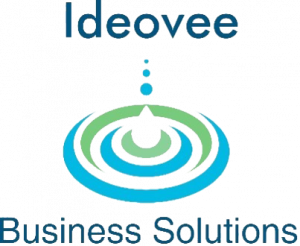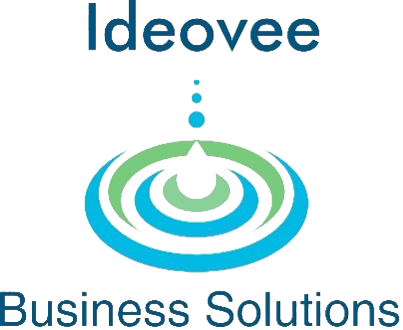
Why does having ‘people insight’ about our prospects matter?
ABM is about getting the right message to the right people in the right accounts at the right time.
ABM Step 3 is about identifying the “right people”.
Businesses are experiencing improved revenue by applying account-based marketing (ABM) to their marketing and sales process. We commonly see validating statistics like “72% of companies say ABM delivers higher ROI than for other types of marketing.” What if our sales team was able to improve unproductive leads by 50%? (“ABM reduces up to 50% of wasted sales time on unproductive leads.”) Step 3 in ABM, People Insight focuses the efforts and attention of our sales team on the people that are most likely to be interested in our product or service.
To influence prospective buyers, we need to know them (as much as possible from the outside looking in before first contact) and we also need to get them to get to know our company, our salespeople as trustworthy professionals and our product: likely in order to build trust and credibility in the sales process. Just like we want to understand the prospect company, we also need to understand the people we will be communicating with. It will help we identify the right people within an organization and craft a personalized message to get their attention.
By doing the advance work to find the people in the industry that are most likely experiencing the problem that we solve, we can cultivate prospects that are more likely to be interested in what our business has to offer. With a personalized, contextually relevant communication that demonstrates a depth of understanding about the prospect and the problem they experience in their business; we will have refined our outreach in a highly focused way. This increases our prospects of reaching people that will care about the problem our business solves.
There will still be steps in creating awareness of the problem and consensus about what constitutes an ideal solution before we can effectively educate the prospect about the merits of our solution. But with advance work, we increase the likelihood of talking to an audience that will care. Remember, the communication doesn’t start with what we have to offer, the prospect isn’t going to care. An opening that demonstrates empathy and at least a working knowledge of the prospect’s business improves the chances of developing an effective and trusted buyer-seller relationship.
Think about our focal market, how many buying influencers are there for our product? In terms of the right level in the company (VP, director, GM, etc.), with budget authority, who experiences the problem we solve enough to pay for a solution? It’s likely that on a local or regional scale, there may be 10s or 100s, on a national scale perhaps in the range of 1,000. How can we hone our marketing and sales efforts to focus on the buying influencers that actually matter to our business?
How to start identifying the people that matter to our business?
An effective starting point begins with reviewing the success stories and profiles of our loyal, repeat customers that generate the most revenue and profitability for our business. Who opened the door to conversations with our sales team? What is the buyer persona, based on empirical field data? What was their job title? Level in the company? What was the problem they faced that made our sales communications resonate? What was it about the nature of their role that sparked their curiosity about our business and made them want to learn more?
Buyer personas/ information determine the characteristics of key stakeholders within that selected company. This is an important part of focusing on the right accounts. Any company we prospect is going to have people in it who are the key decision makers or stakeholders. The decision to invest in our company or not is made by these individuals. These stakeholders are also the people who will communicate with our sales team.
Getting into the practice of a quarterly (at last) scrub of the buyer persona will help continuously improve sales effectiveness. If we want to first refine our buyer persona, some key points to consider include:
- Location: Where does this buyer reside?
- Age: How old are they, and how does that influence their decision-making?
- Why: Why do we want to select this person?
- Job level? Who has a budget and typically makes purchase decisions for our products and services?
- News Source: Where do they get their information, and what outlets do they trust? Where can we reach them?
- Pain Points: What do they struggle with at their company, and how can we help them resolve their current issues?
- Team player: focus on “we” or focus on “me”: leadership versus sole contributor. If they don’t feature working with others, they may be unwilling to open up and work with an external partner/vendor.
- Goals: What do they want to achieve at their company?
- Objections to Purchase: Why would they say “no” to doing business with we?
- What are our buyer’s priorities?
- Does she have authority to make business decisions?
- What types of information resources does he use to help make a purchase decision?
- What pain points does she face?
- What’s their typical education level?
- What interest groups do they follow?
This is an area for introspection about what has worked for us. It’s time to learn from the experience of success and reinforce the patterns of success. And also, it’s time to abandon the failed efforts and stop pursuing the leads with the lowest percentage yield. Focus on where it matters and who it matters to.
We have to be able to scale our ABM efforts and focus on the best customers for our business. It’s time to dig into the buying journey and be critically introspective about what is effective. How has the buying journey worked for our customers? Take time to understand the buying committee and process with our customers and who let us into the business as the entry point. It helps to break down the communications and deal flow to know what each buyer cares about at each step: technical specs, reliability, support, sales reference accounts, costs, etc.
This insight helps us identify the right people to talk with at each stage and it also will inform our ABM cross-functional team about ABM Step 4 Messaging and Content (next month’s article). By knowing our entry point we can better craft an opening communication that demonstrates empathy with that person’s pain points and solving some pain point at work for them.
What does People Insight research look like?
In this stage, our trained ABM analysts work to identify the key people at the prospective company that we should contact. This starts with our insight on the job titles where we expect to have success and a few keywords that we expect to find in their online profile. To provide the analyst with background, they need to know and understand the buyer’s persona. That helps the analyst better focus on the key contacts at the prospect company.
From there, we need to move from the conceptual buying persona to identifying the actual people at the prospect company:
- Name
- Contact Information
- Occupation
- Job title
- Goals
- Challenges
- How we and our products solve a problem they face
We’ve got to build that foundation for personalized insight. What’s going to matter to the recipient when we contact them? We’re looking at their role and responsibilities, behavioral data to the extent that’s available online, intent data if they are actively trolling our web page, attending webinars, requesting product data sheets, etc. We also need insight into their work challenges and personal interests. What can we start to glean about their motivation?
Identifying the right contacts for our business message
Deep insight on the people at the prospect company helps us better personalize the messaging and content to specific members of the buying team by role and seniority (as well as other factors that we raise for our analysts or that the analysts raise for our consideration). The analyst will build detailed profiles on the contacts that represent key members of the buying team — probably in the range of 5-10 contacts for a mid-size company.
Another key component of account-based marketing is identifying who’s truly interested in our solutions, or at least leaning toward making a purchase decision.
In the digital world, we leave ‘footprints’ behind – on the websites we’ve visited, the articles we’ve read, and the content we’ve downloaded. If read correctly, we can use these footprints as part of our marketing plan and martech tools to identify ‘buyer intent’ – those contacts who exhibit a propensity to purchase a solution like ours. Here’s a simple example: if someone is visiting websites of various marketing automation system providers and reading or downloading analyst reports and other literature about how to purchase marketing automation and compare marketing automation vendors, the chances are good that they intend to purchase a marketing automation solution in the near future.
Our ABM analysts research numerous online resources to find the insight we need to succeed. They will also use several tools to try to find the business email address for our prospect contacts.
ABM Step 3 People Insight research starts with two focus points: Job Titles and Keywords
Job Titles
This starts with input from sales, marketing and business development on:
- What are the titles (max 3~5) of the people at the potential customers that are the gatekeepers with decision and budget authority to authorize the purchase of the client’s products & services?
- Find that balance of calling too high and calling too high, or try a mix for A-B testing.
- Who at the prospect company will use the product/service and has the budget and authority to make the purchase decision? And who are the likely influencers or recommenders of new products and services?
Key Words
The analysts will also need input on 3 minimum–5 maximum keywords relevant to the gatekeeper’s profile, job, and/or our client’s products and services.
Then it’s time to turn the analysts loose to identify the people and ideal buyer within a prospect account. Then the analyst can identify prospective leads specific to each stage of the buyer’s journey.
Ideally, the analyst will provide the sales and marketing teams with a depth of insight into the buyer’s name, title, LinkedIn URL, email address, mailing address, phone number, interests, online activity, professional focus areas, place in the organization structure, and motivation.
Summary
If we want 50% improvement for our sales team, that increases their time with prospects who care about our solution and eliminates more of the chaff in the sales process. We have to empower our sales team with insight into who they need to talk with. From the initial outreach, we develop a relationship of trust with the key influential buyers in our industry. We monitor the results to act on the near-term opportunities with proposals and follow-up meetings and assign scalable resources to nurture campaigns for the prospects that are not quite ready to act.

